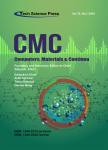Deep Reinforcement Learning Based Unmanned Aerial Vehicle (UAV) Control Using 3D Hand Gestures
作者机构:Faculty of Electrical and Electronics(FKEE)Universiti Tun Hussein Onn MalaysiaParit Raja81756Malaysia Department of Electrical&Electronic EngineeringUniversiti Teknologi PETRONASSeri Iskandar32610Malaysia Faculty of Engineering Science and TechnologyIsra UniversityHyderabad71000Pakistan Department of InnovationCONVSYS(Pvt)Ltd.44000IslamabadPakistan
出 版 物:《Computers, Materials & Continua》 (计算机、材料和连续体(英文))
年 卷 期:2022年第72卷第9期
页 面:5741-5759页
核心收录:
学科分类:08[工学] 0812[工学-计算机科学与技术(可授工学、理学学位)]
基 金:CONVSYS Research Management Centre, Universiti Teknologi PETRONAS Yayasan UTP, YUTP, (015LC0-316)
主 题:Deep reinforcement learning UAV 3D hand gestures obstacle detection polar mask
摘 要:The evident change in the design of the autopilot system produced massive help for the aviation industry and it required frequent *** learning delivers appropriate outcomes when considering a continuous environment where the controlling Unmanned Aerial Vehicle(UAV)required maximum *** this paper,we designed a hybrid framework,which is based on Reinforcement Learning and Deep Learning where the traditional electronic flight controller is replaced by using 3D hand *** algorithm is designed to take the input from 3D hand gestures and integrate with the Deep Deterministic Policy Gradient(DDPG)to receive the best reward and take actions according to 3D hand gestures *** UAV consist of a Jetson Nano embedded testbed,Global Positioning System(GPS)sensor module,and Intel depth *** collision avoidance system based on the polar mask segmentation technique detects the obstacles and decides the best path according to the designed reward *** analysis of the results has been observed providing best accuracy and computational time using novel design framework when compared with traditional Proportional Integral Derivatives(PID)flight *** are six reward functions estimated for 2500,5000,7500,and 10000 episodes of training,which have been normalized between 0 to−*** best observation has been captured on 2500 episodes where the rewards are calculated for maximum *** achieved training accuracy of polar mask segmentation for collision avoidance is 86.36%.



